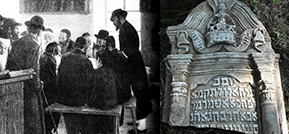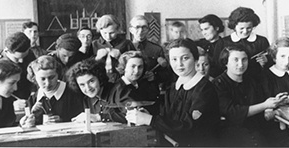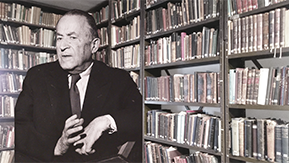Buchach
| Years | State | Province | District |
| Until 1772 | Polish-Lithuanian Commonwealth: Kingdom of Poland |
Rus Voivodship (Województwo ruskie) |
|
| 1772-1867 | "Hapsburg Empire", since 1804 - Austrian Empire | Kingdom of Galicia and Lodomeria (Königreich Galizien und Lodomerien) | |
| 1867-1914 | Austro-Hungarian Monarchy | Kingdom of Galicia and Lodomeria (Königreich Galizien und Lodomerien) | Buczacz , Galicia |
| 1914-1915 | Under Russian occupation | General-Government Galitsiia | |
| 1915-1918 | Austro-Hungarian Monarchy | Kingdom of Galicia and Lodomeria (Königreich Galizien und Lodomerien) | |
| 1918 - May 1919 | West-Ukrainian People's Republic | ||
| May 1919 - September 1939 | Republic of Poland | Stanislawów wojewódstwo | Buczacz powiat , Tarnopol wojewódstwo |
| September 1939 - June 1941 | USSR: Ukrainian Soviet Socialist Republic | Stanislav oblast' | |
| June 1941 - July 1944 | Under German occupation: General Government (Das Generalgouvernement für die besetzten polnischen Gebiete | Distrikt Galizien | |
| 1944-91 | USSR: Ukrainian Soviet Socialist Republic | Stanislavov (Stanislaviv) oblast'; since 1962 renamed Ivano-Frankovsk (Ivano-Frankivs'k) oblast' |
|
| Since 1991 | Republic of Ukraine | Ternopil oblast' | Buchach rajon |
- -
| Year | Total | Jews | Percentage of Jews |
| 1552 | ? | 14 families | - |
| 1765 | ? | 1,286 | |
| 1870 | 8,959 | 6,077 | 67.8% |
| 1890 | 11,096 | 6,976 | 62.8% |
| 1910 | 14,286 | 7,777 | 54.4% |
| 1921 | 7,517 | 3,858 | 51.3% |
| 1931 | 4,439 | ||
| 2001 | ca. 12,500 |
Buchach is a small city located on the Strypa river (a tributary of the Dnestr river) in the Suchostaw region of western Ukraine. It is the administrative center of the Buchach district and rests 135 km south east of Lvov and about 55 kilometers south of Ternopil
The town’s topographic location is one of the points of passage from east to west in the geographic range north of the Dniester River, and the curving of the Strypa River in the area provides protection to the town from several directions. Due to these geographical circumstances, the members of the Buczacki family, a Polish aristocratic family who were the first owners of the town, fortified it with defensive walls and a complete defense system already in the 14th century, when it was still defined as a large village. Buczacz is known as a settlement already from the Neolithic period, and served as a fort already in earlier times, but was recognized as a city only at the end of the 15th century. During times of peace, during the 16th century, the town became a center of trade between the Ottoman Empire in particular, and the East in general, and Poland. Similarly, the fertile agricultural lands around the town provided plentiful grain, potato and legume crops, as well as grazing grounds for the raising of cattle and horses. The raising and marketing of quality horses was one of the town’s commercial trademarks.
In times of war the town saw several difficult campaigns. In battles against the Cossacks in 1648 the town successfully withstood the siege under which it was placed, as it did in the battles against the Ottoman sultan Muhammed the 4th in 1672. In 1675, however, the Ottomans completely destroyed the town and even slaughtered those townsmen who did not manage to escape to the town stronghold. These Ottoman forces were in turn defeated by the Polish king, John Sobieski, and finally routed from the area.
In the beginning of the 17th century the town was passed on as an inheritance from the Buczacki family to the noble Potocki family, which developed the town and built several public buildings in it whose impressive facades stood out in the region. During the 1760s a municipality building and an outstandingly grand catholic church were built in the city, and the Jewish synagogue which was erected in the city, with the support of its noble lords, was also unusually magnificent.
The Jews of Buczacz
We know of Jews living in Buczacz already in 1500, when it was still just a feudal estate. In 1552 there were 14 Jewish families residing in Buczacz, the members of whom were involved in trade between Turkey and Poland, apparently on a very large scale. From the middle of the 16th century Polish nobles from Eastern Galicia, Wołyń and Podolia began encouraging migration to the private cities they built and developed in these areas. Many Jews, who received rights and comfortable conditions for economic development from these nobles, began to migrate from Western Poland to these areas, including to Buczacz. Thus, similarly to many other Eastern Galician cities, we find the Jews forming a majority of the city’s inhabitants beginning in the 17th century. Jews participated in the defense of the city from the incursions of the Tatars, the Cossacks and the Ottomans throughout the 17th century, and fought shoulder to shoulder with the Polish citizens of the city. The Polish nobility requested that the king release the remaining Jews of Buczacz from the poll tax after the destruction of the city in 1676, as part of their efforts to rehabilitate the population of the city. This phenomenon repeated itself at the beginning of the 18th century, following a fire that broke out in the city. The great Jewish synagogue of the city was also damaged in the fire, and was renovated with the help of the Polish nobility.
The employment rights of the city’s Jews were also adjusted, by the Potocki family, to equal those of the Christian residents at the end of the 17th and beginning of the 18th centuries. This adjustment included the extension of the right to vote in the municipal elections, to purchase real estate and to build different shops and workshops. The Jews even garnered special conditions in the realm of local property taxes and were subject, not to the adjudication of the municipal court, but rather to the palace governor. Jews received the right to appeal judgements before the owners of the city, and it was forbidden to place them in the city jail outside of criminal cases. The right to adjudicate internal disputes between Jews was granted to the Jewish courts, as was the running of the Jewish community with regards to tax collection. In addition, a Jewish representative took part in the collection of city taxes, and various city regulations were made with special consideration of Jewish custom: It was forbidden to hold the weekly market day on Saturday, and Jews were exempt from appearing in court on this day as well. In 1723 the Potockies established city guards in order to maintain security and order during these market days. Each of the guard units was composed of four sentries – two of them Jews. It was in this period that the so-called ‘Old Beit Midrash’ was built, and, with the support of the Potockis, the Central Synagogue was built as well. This synagogue, which was inaugurated in 1728, was planned by an Italian architect and was one of the most magnificent ones in the region. The Jews also received additional lands for the expansion of their cemetery, a tax dispensation for the cemetery guard, and more.
Stefan Potocki and his heir Mikolai Potocki saw the Jews as the main reason for the improved economic standing of the city, and therefore initiated those conditions which would bring additional Jews to the city. The economic conditions provided for the Jews, the exemptions from various taxes, the granting of equal rights and the sense of increased security for the Jewish inhabitants of the city led to a significant increase in the number of Jewish inhabitants in the city, beginning in the 18th century.
Beginning with the Austrian occupation, the condition of the Jews throughout the region took a downturn. This was particularly true for the Jews of Buczacz. The Jewish community of Buczacz continued to grow, not due to any improvement in their living conditions, but rather to the prohibition on their living in villages without engaging in farming activity. The curtailing of employment opportunities for the Jews caused great harm, until equal rights were again granted in 1848. The relationship between the Potockis and the Jewish community also changed during this period, with various disputes springing up between Peter Potocki and the Jews and being brought before the Austrian rulers.
From 1848, when the rights of the Jews were made fully equal to those of the general population, Jews also began purchasing lands and agricultural estates in the city’s environs, and by the beginning of the 20th century the number of estate-holding Jews around Buczacz had grown significantly, reaching a peak in which 20% of the surrounding lands were owned by Jews. This obviously led to a rise in the Jews’ economic situation and their influence, but also contributed, at the beginning of the 20th century, to a rise in anti-semitic sentiment in the region. The Jews, who comprised about two thirds of the local population in the year 1870, also played significant roles in the management of the city, and in 1874 twelve of the thirty city council members were Jews, nine were Poles and nine were Ukranian. Five years later, in 1879, Berish (Bernard) Stern was elected mayor of the city, a position he filled until 1921. During this period various Jewish community institutions were established, including twelve synagogues and batei midrash, an upper yeshiva, a soup kitchen, a Baron Hirsch school, a chicken slaughterhouse, a home for the elderly and an orphanage, and the ‘hekdesh’ hospital (which had existed already in the 17th century and was the only hospital in the city) was re-fitted with modern conveniences.
The economic growth of the Jewish community, beginning in the middle of the 17th century, brought to a rise in the community’s standing in the internal Jewish politics of the region. As is well known, the Jewish communities of Poland-Lithuania were run, from the beginning of the 16th century until 1765, by the semi-autonomic Council of Four Lands. Until the middle of the 17th century, the Jewish community of Buczacz, together with other communities of the region, was subordinate to the community of Lvov, including their subordination to the rabbi of Lvov, who was the rabbi of the county. Beginning in 1648 and following the Cossack pogroms, the Buczacz community absorbed many refugees from communities that were destroyed during the pogroms, including refugees from Szarogród and the rabbi of that community, Rabbi Yaakov Eliyahu b. Moshe Mack, who was appointed the first rabbi of Buczacz. The community elder of that period, Rabbi David Preger, turned the community into one of the significant forces in the regional Council in particular, and in the history of the autonomous institutions of Polish Jewry in general. From the beginning of the 18th century, the Jewish community of Buczacz played a more central role in the political activity and spiritual-scholarly creativity of the Jews of Poland. During the appearance of the Sabbatian movement in Eastern Europe, the sect also garnered some believers from amongst Buczacz’s Jews, and likewise during the great controversy surrounding Jacob Frank and his followers, until their conversion to Christianity in 1759.
Several key figures, whose writings have become inalienable assets in the Jewish culture of Eastern Europe, were raised in Buczacz or spent significant amounts of time there. Amongst these are Rabbi Yehoshua Falk (1680-1756), author of the well-known work ‘Penei Yehoshua’, who lived in the city while filling the post of rabbi of the region. Rabbi Meshulam Igra (1752-1801), author of the ‘Igra Ramah’, a book of responsa and commentary on the Talmud, was born and raised in the city. Rabbi Zvi Hirsch Karro, author of the book of responsa ‘Neta Sha’ashu’im’, was one of the notable adjudicators of the area during the second half of the 18th century, and his son-in-law, Rabbi Avraham David Wahrman, author of several treatises in halakha and Hassidic thought, including the ‘Ezer Mikodesh’ (Lvov, printed as a commentary on the Shulkhan Arukh), ‘Birkat David’, a collection of Hassidic thoughts, ‘Mahaze Avraham’ and 8 other treatises, served as the city’s rabbi during the first half of the 19th century. Rabbi Shalom Mordechai Shvadron, author of the Shut Maharsham, is considered one of the central adjudicators of the latter half of the 19th century and the beginning of the 20th. Responsa directed at him originated from all over the Jewish world: America, Japan, Australia and China, in addition to many European Jewish communities.
Toward the end of the 18th century and through the beginning of the 19th members of the East European Haskala (Enlightenment) movement began operating in Buczacz. Rabbi Pinchas Eliyahu Horwitz, author of the popular ‘Sefer Ha-Brit’, was one of the first to disseminate the general Enlightenment movement in Eastern Europe. His aforementioned book, which presented secular sciences to its readers in laymen’s terms, was translated to Ladino and was also printed in Saloniki, and in many editions throughout the beginning of the 20th century. It is important to note that the different social trends which operated in Eastern Europe from the end of the 18th and beginning of the 19th centuries did not lead to significant tensions between Hassidim, those opposed to the Hassidic movement and Enlightenment Jews in Buczacz. At the end of the 19th century the Zionist movement ‘Zion’ began operating in Buczacz, counting among its members the leader of the Jewish community and the mayor of the town, Abba Stern. A municipal library, called ‘Beit Midrash’ and a community center named ‘Kesher’, which served as a meeting-place and home for authors, poets and intellectuals, were founded in the city. It was in the latter institution that the well-known author and noble laureate, Shmuel Joseph Agnon (Czaczkes), who was born and raised in the city, first recited his poetry. The stories of the city and its Jewish community, both at its cultural peak and during its decline, are reflected in many of Agnon’s stories, and two of his compositions were specifically devoted to it: “A Guest for the Night” (Ore'ah Noteh Lalun, Jerusalem 1940), which describes the conditions of the Jewish community of Buczacz between the two World Wars, and his book Ir Umeloah ("A City and the Fullness Thereof", Tel Aviv 1973), in which he collected many stories of the city and its Jews.
מקורות:
משה ברור, 'בוצ'אץ': רשימה גיאוגרפית', בתוך: ספר בוטשאטש: מצבת זכרון לקהילה קדושה, בעריכת ישראל כהן, תל אביב 1956, עמ' 44-39.
נתן מיכאל גלבר, 'תולדות היהודים בבוצ'אץ'', בתוך: ספר בוטשאטש: מצבת זכרון לקהילה קדושה, בעריכת ישראל כהן, תל אביב 1956, עמ' 74-45.
אהרון ויס ואהרון יעקבוביץ, 'בוצ'אץ', פנקס הקהילות, ב, עמ' 89-83.
שמואל יוסף עגנון, עיר ומלואה, תל אביב 1973.
שמואל יוסף עגנון, אורח נטה ללון, ירושלים 1940.
See site Buczacz gallery
Photos, Documents and personal memories of Jewish Buchach
EnglishTranslation of the Buchach Yizkor Book
Items relevant to the community
| Title | Type of item | Years |
|---|---|---|
| "Tabellarische Beschreibung der Stadt Buczacz u... | CAHJP Cards | 1783 |
| "Wykazy czasopism sprzedawanych i prenumerowany... | CAHJP Cards | 1934 |
| "О высылке заложников", в т.ч. об арестах, вз... | CAHJP Cards | 1915 |
| "О местах водворения лиц, высылаемых из преде... | CAHJP Cards | 1915 |
| .. | People | |
| .. Getsel Son of Ozer | People | |
| ... | People | |
| ... | People | |
| ... | People | |
| ... | People |






